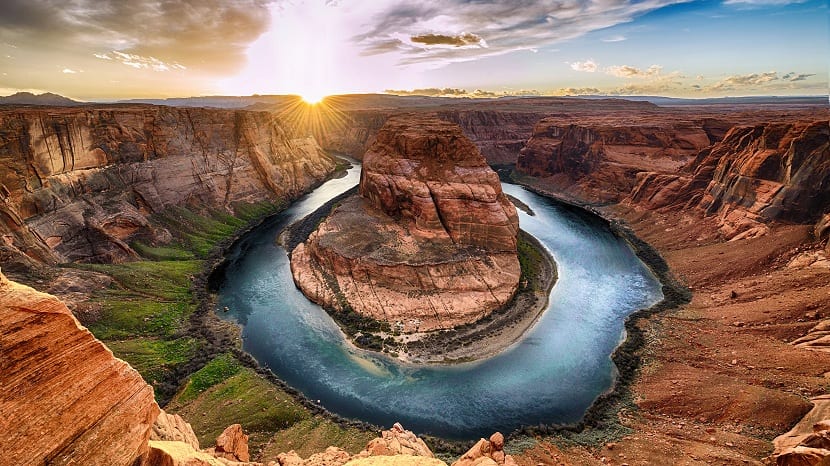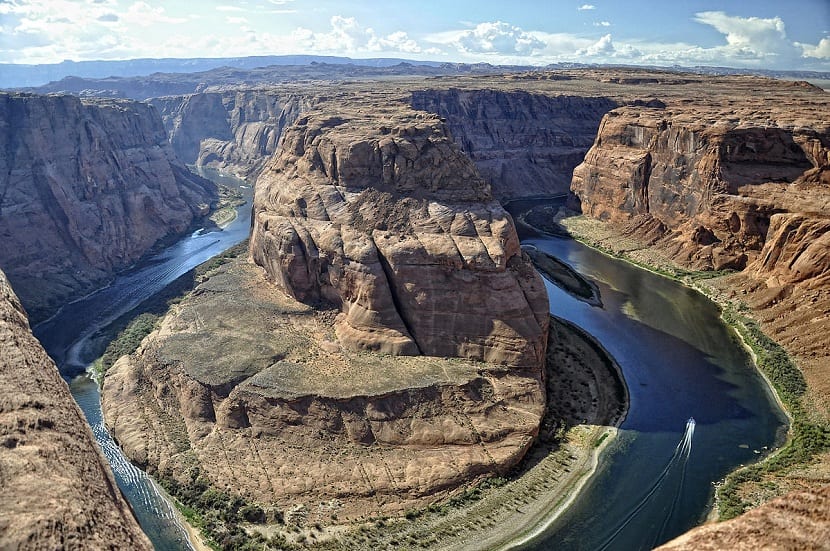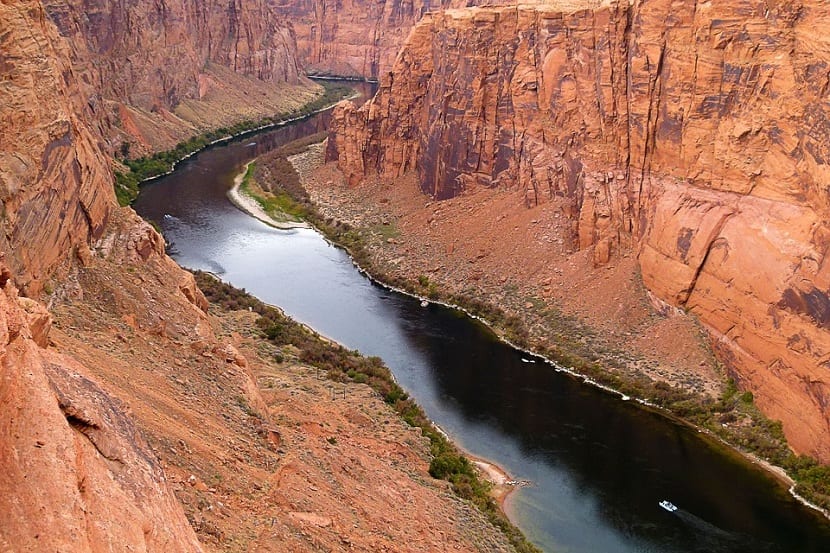
Our planet has truly impressive rivers that make us think that nature always has some surprises for us. Today we talk about Colorado River. It is a river found in the United States and North America and is one of the main and most famous. It has been active for more than 6 million years and the continuous flow of water has shaped the rock, creating spectacular shapes and a gorge so deep that it is known as the Grand Canyon of the Colorado.
In this article we are going to detail all the characteristics of the Colorado River, how it was formed and what flora and fauna are associated with this wonder.
Key features

The Colorado River begins to rise in the region of Rocky Mountains. If you want to go to see the source of the Colorado, you can do it by going to a mountain pass known as La poudre pass. In this place the river is born and it is only a simple mountain stream in a humid meadow. From there, it travels a total of 2.334 kilometers until it empties into the Sea of Cortez. Throughout this entire route a total of 637,137 km2 of water drains. This represents 7% of the entire surface of the United States.
The course of the Colorado River is quite special and known for having the effect of undermining the terrain it passes through. In this way, with the passage of time, small meanders and canyons are formed that, little by little, increase in size. From its birth to just 1,5 km away, over the years the first Grand Canyon of the Yellowstone was formed. It is shallow and not very high, but its middle course passes through other deeper canyons.
The course of the river also passes through everything that has been complete desert areas. As you can see, this river is of great importance for the development of flora and fauna in these areas as it is a source of water in an area of scarcity. The bottom of its course is, at times, completely dry. Unfortunately, rainfall is decreasing year after year and, although its delta is still the habitat of many species, it is losing more and more relevance.
Formation of the Colorado River

It is a river with more than 25 tributaries that help it feed on more water throughout its journey. Some of the main most famous rivers that feed it with water are the Green, the Gila, the San Juan, the Gunnison, the Azul, the Dolores, the Escalante and the Paria.
We have already commented before that the Colorado River is quite old since its formation. In the Cretaceous, part of North America was still under the Pacific Ocean. It is then, where the Colorado could begin as a small stream that was heading in a southwesterly direction. More or less, about 5 million years ago, After the erosion and shaping that it was causing in the land, its course was established to the current one with the mouth in the Sea of Cortez. The rest of the river basin developed over the last 40 million years.
Although the Colorado River appears to be around 17 million years old, much of all the ground carving, with the formation of meanders and canyons, occurred over the past 6 million years.
Flora and fauna

As we have mentioned before, the river is circulating through desert or semi-desert areas where we find wildlife adapted to this hostile environment. As expected, a river with good flow that passes through the middle of a desert will create green areas associated with a great variety of species that take advantage of this somewhat more pleasant environment. We find some species of fish that are endemic to this river, given that the environmental conditions here are unique and do not occur anywhere else in the world. Therefore, these species that can only be found in the Colorado River are of great value. The river basin in total is home to some 14 endemic species of fish, so this increases the tourist attraction but also generates the need to protect the ecosystem.
It has a part with a more purple color and a visiting area where non-aquatic species such as some birds and the willow flycatcher come. We also came across some bats, frogs, turtles, coyotes, salamanders, and beavers. In the delta are the habitat of numerous species, among which we find aquatic birds.
On the other hand, we also find the flora that is made up mainly of small, low plants. It is normal that in a desert ecosystem, the plants do not acquire a large size due to the lack of water. On the banks of the river we can find grasses of all kinds, some floating plants in the river belonging to the genera Potamogeton and Typha, etc. We can find some trees like the Josué tree in the areas near the rivers, but in the rest of the desert areas we will not find anything leafy or exuberant plants. Cactaceae prevail in these areas.
Economic importance of the Colorado River
As it cannot be less important, the Colorado River is also of great economic importance. The native peoples of the basin depend on this flow for food and drink. Without a doubt, the presence of this river was key to the development of the population in one of the most arid regions in all of North America.
Part of this watercourse is interrupted by dams that divert the water. Almost 90% of the water is used to irrigate crops and another part to provide drinking water to the populations near the river. It is estimated that it provides water to about 40 million people.
All this means that the Colorado River is not going through its best moment. Diversion of water, pollution, introduced invasive species, are degrading the favorable conditions of the river and affecting native species. With the impacts of the human being, very valuable habitats are being destroyed, causing the disappearance of species of flora and fauna.
As you can see, even a river as incredible as the Colorado is affected by the hand of the human being. I hope that with this information you can learn more about this fantastic river.
